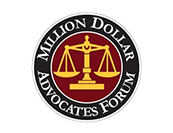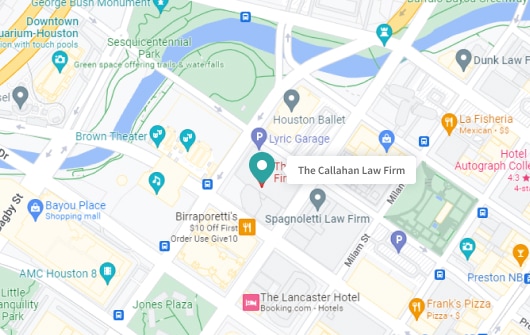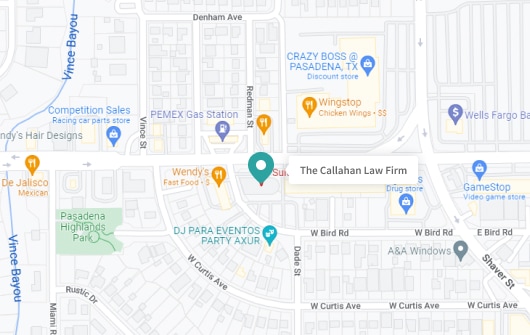5 Common Types of Personal Injury Claims
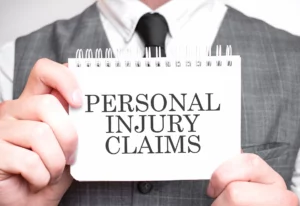
According to the Center for Disease Control and Prevention, over 20 million patients come into the ER yearly with unintentional injuries. All too many of these injuries are caused by the negligence of someone other than the injured person.
Sustaining a significant injury can be a devastating experience which is why it is essential to consult with and get help from a experienced personal injury lawyer.
This article will provide an overview of the various types of personal injury claims that people in Texas may encounter. From car accidents to workplace accidents to injuries caused by defective products, personal injury claims encompass a wide range of situations where an individual has suffered physical, emotional, or financial harm due to someone else’s actions or omissions.
What is a Personal Injury Claim?
Personal injury claims are a critical aspect of the legal system that provide recourse for persons who have been harmed due to the negligence of another.
When a person becomes a victim of a personal injury incident, the consequences can be life-altering. Aside from the emotional trauma and physical pain, there will be medical expenses, as well as loss of income and potential long-term rehabilitation needs.
Personal injury claims provide a means for individuals to seek compensation for these damages and alleviate the financial burden caused by the injury.
Common Types of Personal Injury Claims in Houston and Pasadena, Texas
Personal injury claims encompass a wide range of situations where an individual has suffered physical, emotional, or financial harm due to someone else’s actions or omissions.
There are various types of personal injury claims that individuals can be compensated for. These personal injury claims are:
- Motor vehicle accidents
- Premises liability
- Medical malpractice
- Product liability
- Workplace accidents
1. Motor Vehicle Accidents
Car accidents and truck accidents are among the most common personal injury claims, and Houston is no exception to this unfortunate reality. Understanding the intricacies of car accidents is essential for Houston residents involved.
Common causes of car accidents in Houston
Car accidents in Houston can stem from various factors, including:
- Distracted driving: This includes activities like texting, talking on the phone, eating, or using in-car technologies while driving.
- Speeding: Exceeding the speed limit is a leading cause of car accidents, as it reduces the driver’s ability to react to hazards.
- Failure to obey traffic control devices: This could include failing to stop at a red light, stop sign, or other instance of failing to yield the right of way.
- Drunk driving: Driving a vehicle under the influence of alcohol or drugs significantly impairs a driver’s judgment, coordination, and reaction time.
- Reckless driving: Aggressive maneuvers, such as tailgating, changing lanes without signaling, or running red lights, can lead to serious accidents.
- Poor weather conditions: Houston’s unpredictable weather, including heavy rain and fog, can reduce visibility and hazardous road conditions, which in turn requires drivers to exercise extra caution.
Types of injuries resulting from car accidents
Car accidents can result in various injuries, varying in severity. Common injuries include:
- Whiplash: Neck injuries caused by sudden back-and-forth head movements during impact.
- Fractures and broken bones: Collisions can lead to bone fractures, often in the arms, legs, ribs, or skull.
- Spinal cord injuries: Severe accidents can cause damage to the spinal cord, leading to herniated discs that may require surgery, to complete or partial paralysis.
- Traumatic brain injuries (TBIs): Head injuries from car accidents can result in concussions as well as more severe TBIs, affecting cognitive and physical abilities.
- Soft tissue injuries: Sprains, strains, and bruising can occur due to sudden movements or impact during a car accident.
Legal Considerations and Potential Compensation
After a car accident in Houston, an injured person should be aware of their legal rights and potential avenues for compensation. Key considerations include:
- Establishing liability: Determining who is at fault for the accident is crucial for pursuing a personal injury claim. This may involve gathering evidence, such as police reports, eyewitness testimonies, and surveillance footage.
- Insurance claims: In Texas, car accident victims typically file claims with the at-fault driver’s insurance company to seek compensation for medical expenses and other losses.
- Personal injury lawsuits: In cases where the insurance company refuses to settle the claim fairly and reasonably, the injured person may pursue a personal injury lawsuit to recover damages. Consulting with an experienced attorney is essential to navigate the legal process.
- Compensation: Potential compensation for car accident victims can include medical expenses, lost wages, pain and suffering, mental anguish, physical impairment, and property damage.
Truck Accidents
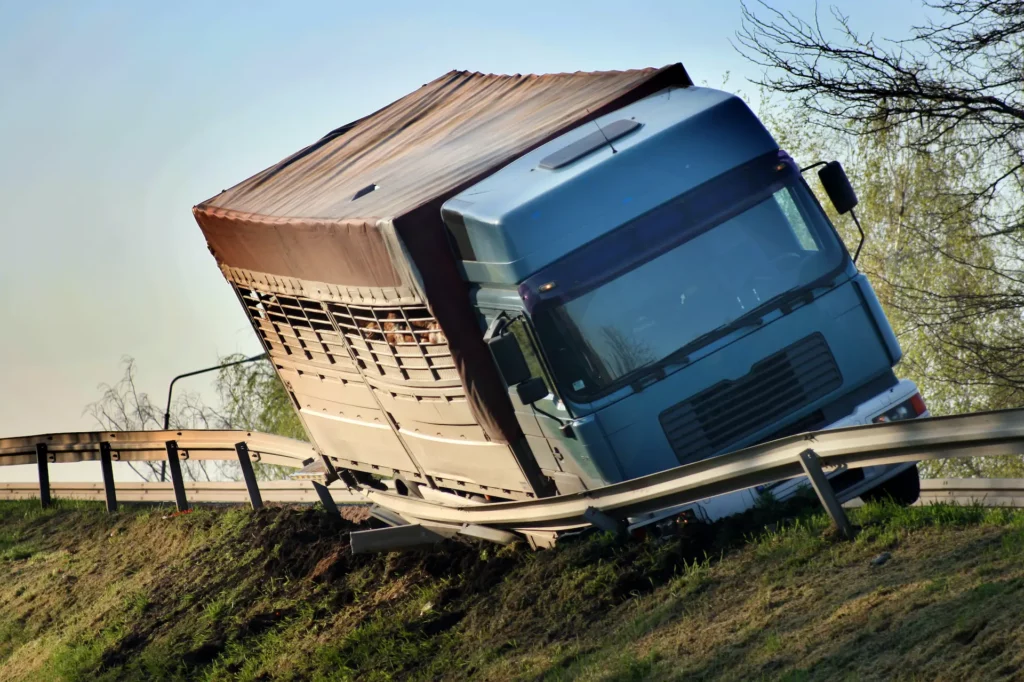
Truck accidents pose unique challenges and hazards on the roads for a number reasons.
Unique factors in truck accidents:
Truck accidents differ from typical car accidents due to several distinct factors:
- Size and weight: Trucks, especially semi-trucks, 18-wheelers, cement trucks and the like, are significantly larger than standard passenger vehicles. This size disparity which includes weight, height, and other factors, can lead to more severe collisions and greater damage.
- Longer stopping distances: Trucks require a longer distance to come to a complete stop due to their size and weight.
- Limited visibility: Large trucks often have blind spots, commonly called “no-zones,” obstructing the driver’s view of surrounding vehicles. This limited visibility increases the risk of accidents during lane changes or turns.
- Technical regulations: The trucking industry is subject to specific regulations and requirements, including driver qualifications, hours of service limitations, and maintenance standards. Violations of these regulations can contribute to accidents.
Serious Injuries Associated with Truck Accidents
Truck accidents can lead to life-altering injuries due to the sheer force involved in a crash. Common injuries include:
- Catastrophic injuries: The size disparity between trucks and smaller vehicles can lead to catastrophic injuries, such as traumatic brain injuries, spinal cord injuries, and amputations.
- Internal injuries: The impact of a truck accident can cause internal injuries, including organ damage, internal bleeding, and chest or abdominal injuries.
- Bone fractures: The force of a truck collision can cause multiple fractures, often in the limbs, ribs, or pelvis.
- Spinal injuries including neck and back injuries: Sudden impact or rapid deceleration in truck accidents can result in whiplash, neck sprains, and herniated discs.
- Emotional trauma: Truck accidents can have long-lasting psychological effects, including post-traumatic stress disorder (PTSD) and anxiety disorders.
Liability and Legal Aspects in Truck Accident Claim
Determining liability in truck accident claims involves complex considerations:
- Multiple parties: Truck accidents can involve multiple parties, including the truck driver, trucking company, shipping broker, vehicle manufacturer, and maintenance providers. Identifying all responsible parties is crucial for pursuing a successful claim.
- Federal regulations: The trucking industry is subject to federal regulations, such as those set by the Federal Motor Carrier Safety Administration (FMCSA). Violations of these regulations, such as exceeding service hours or inadequate maintenance, can contribute to liability.
- Evidence collection: Gathering evidence in truck accident cases is essential, including obtaining black box data, driver logs, maintenance records, and witness statements.
- Expert testimony: Truck accident claims often require the expertise of accident reconstruction specialists, truck safety experts, medical professionals, and industry experts to establish liability and determine the extent of damages.
- Potential compensation: Victims of truck accidents may be eligible for compensation for medical care expenses, lost wages, loss of earning capacity, pain, mental anguish, physical impairment, long-term care, and potentially more.
Motorcycle Accidents
Motorcycle accidents present unique risks and challenges compared to other motor vehicle accidents. Understanding the distinct dynamics of motorcycle accidents is crucial for individuals involved in such incidents.
Risks and injuries specific to motorcycle accidents:
Motorcycle accidents carry inherent risks due to the lack of physical protection and the smaller size of motorcycles. Some specific risks and injuries include:
- Lack of protection: Motorcycles lack the safety features provided by enclosed vehicles, making riders more vulnerable to the impact of accidents.
- Greater visibility challenges: Motorcycles are smaller and can be more difficult to spot on the road, increasing the likelihood of other drivers failing to see them.
- High risk of head injuries: Head injuries, including traumatic brain injuries, are a significant concern in motorcycle accidents due to the limited protection for riders. These injuries can have long-lasting effects on physical and cognitive functions.
Comparative Negligence and Helmet Laws in Houston:
In motorcycle accident cases, the concept of comparative negligence and helmet laws can impact the legal proceedings:
Comparative negligence: Texas follows a modified comparative negligence rule, which means that a person can still recover damages even if they share some blame for the accident. However, the compensation awarded may be reduced based on the amount of fault assigned to the injured party.
Helmet laws: In Houston, all motorcycle riders and passengers must wear helmets that meet specific safety standards. Failure to comply with this law can affect the outcome of a personal injury claim, potentially reducing the compensation awarded.
Pursuing Compensation for Motorcycle Accident Injuries:
Seeking compensation for injuries sustained in a motorcycle accident involves several steps:
Gathering evidence: Collecting evidence, such as witness statements, medical records, and photographs, is crucial for building a strong case.
Establishing negligence: Proving that another party’s negligence or wrongdoing caused the crash is essential for a successful personal injury claim.
Medical documentation: Comprehensive medical documentation showing the extent of injuries, diagnosis, treatment, and long-term prognosis, is vital for proving damages.
Damages and compensation: Damages that can be claimed in this type of case include medical expenses, lost wages, pain, mental anguish, physical impairment, and potentially more.
Legal representation: Consulting with an experienced personal injury attorney will increase the likelihood of obtaining fair compensation.
2. Premises Liability
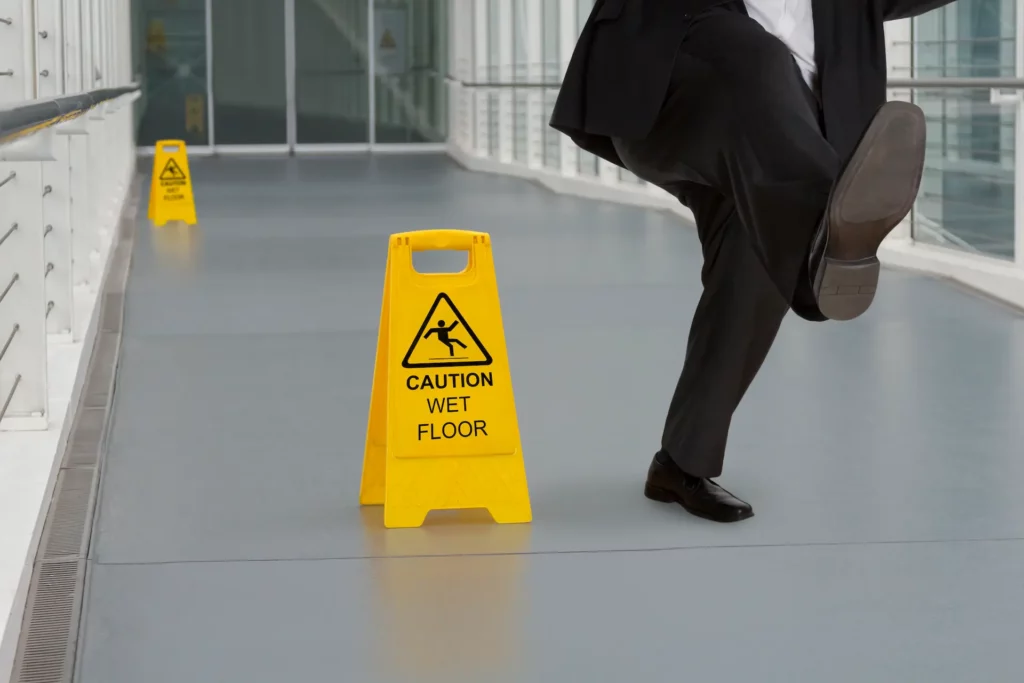
As a general rule, an owner or occupier of a premises has a duty to make sure its premises is free of unreasonably dangerous conditions. Examples of premises liability cases include those involving inadequate security, defective ladders or scaffolding, uneven or unsafe flooring, and slip and falls. Slip and fall accidents occur when individuals lose their footing, traction, or balance and fall due to a hazardous condition.
A slip and fall accident can happen to anyone, anywhere, and understanding the basics of these incidents is crucial for individuals who have experienced such accidents.
Causes of slip-and-fall accidents can include
- Wet or slippery surfaces: Spills, recently mopped floors, or inadequate cleaning can create hazardous conditions, increasing the risk of slips and falls.
- Uneven or damaged flooring: Cracked pavements, loose floor tiles, or uneven walkways can pose tripping hazards.
- Insufficient lighting: Poorly lit areas can obscure potential hazards and increase the risk of falls.
- Lack of warning signs: Failing to display warning signs for wet floors, construction zones, or other dangers can contribute to slip and fall accidents.
- Obstructed pathways: Cluttered or obstructed walkways can impede safe movement and result in falls.
Common Injuries Resulting from Slip and Fall Accidents
Slip and fall accidents can lead to various injuries, including:
- Fractures and broken bones: The impact of a fall can result in fractures, commonly in the wrists, arms, hips, or ankles.
- Head injuries: Falls can cause traumatic brain injuries, ranging from concussions to more severe forms, which can have long-term consequences.
- Back and spinal cord injuries: Falls can lead to injuries to the back and spinal cord, potentially resulting in paralysis or chronic pain.
- Soft tissue injuries: Strained muscles, torn ligaments, and contusions are common soft tissue injuries in slip and fall accidents.
- Sprains and strains: Twisting motions during a fall can cause sprains in joints, ligaments, or muscles.
Property Owner’s Responsibility and Premises Liability Laws in Houston
As a general rule, property owners have a responsibility to maintain a premises and make sure it is free of unreasonably dangerous conditions. In Houston, premises liability laws govern slip-and-fall accidents, establishing the duty of care that property owners owe visitors. Key points include:
Duty of care
Property owners must take reasonable steps to address known hazards, warn visitors of potential dangers, and maintain a safe environment.
Negligence
To establish a premises liability claim, it is necessary to prove that the property owner’s negligence or failure to fulfill their duty of care directly caused the slip and fall accident.
Comparative negligence
Texas follows a modified comparative negligence rule, meaning that the injured party’s compensation may be reduced if they are found partially at fault for the accident.
Steps to take after a slip and fall accident to support a claim
After a slip and fall accident, there are crucial steps to take to support a potential claim:
Seek medical attention
Prioritize your health and well-being by promptly seeking medical evaluation and treatment for injuries sustained in the accident.
Document the scene:
- Take photographs and video of the condition that caused the accident.
- Gather contact information of witnesses.
- Report the incident to the property manager or owner.
Preserve evidence
Keep any clothing or shoes worn during the accident and retain copies of medical records, bills, and other related documents.
Consult with an attorney
Seeking guidance from a knowledgeable personal injury attorney experienced in slip and fall accidents can help you navigate the legal process and protect your rights.
3. Medical Malpractice
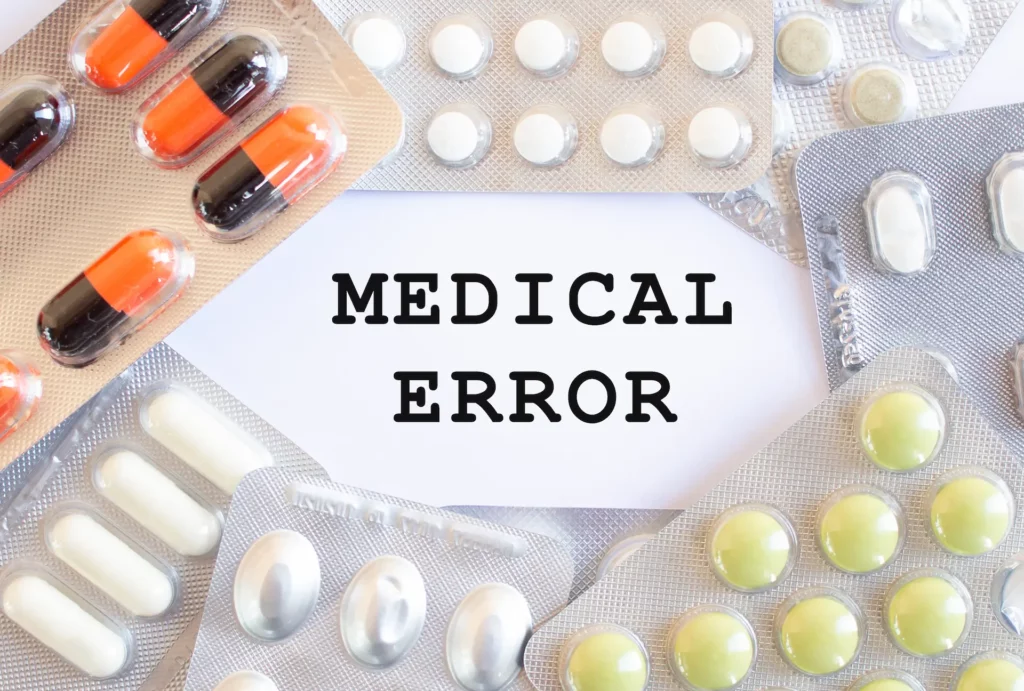
Medical malpractice refers to the negligence of a healthcare provider that causes harm to a patient. It occurs when a healthcare provider fails to meet their duty of care, leading to preventable harm.
Examples of medical malpractice cases:
Medical malpractice can manifest in various forms, including:
Misdiagnosis or delayed diagnosis
When a healthcare professional fails to correctly diagnose or timely identify a patient’s condition, leading to incorrect treatment or delayed intervention.
Surgical errors
Mistakes made during surgery, such as wrong-site surgery, a surgical instrument left inside the patient, or damage to surrounding organs or tissues.
Medication errors
Administration of incorrect medications, wrong dosages, or failure to recognize potential drug interactions, resulting in adverse effects or complications.
Birth injuries
Injuries to the mother or infant sustained during childbirth due to negligent actions or inadequate monitoring by healthcare professionals.
Anesthesia errors
Mistakes in administering anesthesia resulting in complications, allergic reactions, or anesthesia awareness.
Types of Injuries and Harm Caused by Medical Malpractice
Medical malpractice can lead to a wide range of injuries and harm, including:
- Paralysis
- Coma
- Amputation
- Permanent disability
- Fatality
- A lifetime of additional medical care with associated expenses
Medical Malpractice Laws and Proving Negligence in Houston
Medical malpractice claims are subject to specific laws and requirements in Houston and throughout Texas, including:
Statute of limitations
There is a limited timeframe within which a medical malpractice claim must be filed. In Texas, a claimant must settle the claim or file a proper lawsuit not later than 2 years from the date of the negligence. This is a general rule with exceptions, so it is essential to consult with a qualified lawyer to determine the precise statute of limitations applicable to each case.
Expert testimony
In medical malpractice cases, expert testimony is usually required to establish the standard of care that should have been provided and to demonstrate how the healthcare provider deviated from that standard.
Proving negligence
To succeed in a medical malpractice claim, the plaintiff must demonstrate that the healthcare provider breached their duty of care, causing harm to the patient. Elements of proving a medical malpractice case include but are not limited to proving a doctor-patient relationship, the healthcare provider’s negligence, and that the negligence caused the patient’s injuries and damages.
4. Product Liability
Product liability refers to the legal responsibility of manufacturers, distributors, and sellers for injuries or damages caused by defective products.
Understanding product liability claims
Product liability claims arise when a product is found to be defective or unreasonably dangerous, causing harm to consumers. These claims hold manufacturers and other parties accountable for injuries resulting from a product that is found to be defective.
Types of product defects leading to injuries
Product defects can take various forms and lead to injuries, including:
Design defects
Flaws or errors in the product’s design, even when manufactured correctly.
Manufacturing defects
These are defects that occur during the manufacturing process. This could include a specific batch or unit of a product that is defective because of something that happened during manufacturing that caused the product to be different from the design and thus unreasonably dangerous.
Marketing defects
Inadequate warnings, insufficient instructions, or failure to provide proper safety precautions regarding the product’s use, resulting in injuries or accidents.
Strict Liability and Negligence in Product Liability Cases:
Product liability cases can be based on two legal theories:
- Strict liability
Under strict liability, manufacturers or sellers can be held responsible for injuries caused by defective products, regardless of whether they were negligent. The focus is on whether the product was unreasonably dangerous and whether it was a producing cause of the injuries and damages. - Negligence
Negligence claims in product liability cases require demonstrating that the manufacturer or seller failed to exercise the requisite level of care in designing, manufacturing, or marketing the product.
Seeking compensation for injuries caused by defective products
To get compensation for injuries caused by defective products, individuals can take the following steps:
Preserve the product: Keeping the product that is the basis of the claim is essential as it will be evidence in the case.
Seek medical attention: Prioritize receiving proper medical evaluation and treatment for injuries caused by the defective product.
Document the incident: Gather evidence, such as photographs, medical records, receipts, and witness statements, to support the claim.
Consult with a product liability attorney: Seeking the expertise of an experienced product liability attorney is crucial for navigating the legal complexities, determining liability, and getting fair compensation.
5. Workplace Accidents
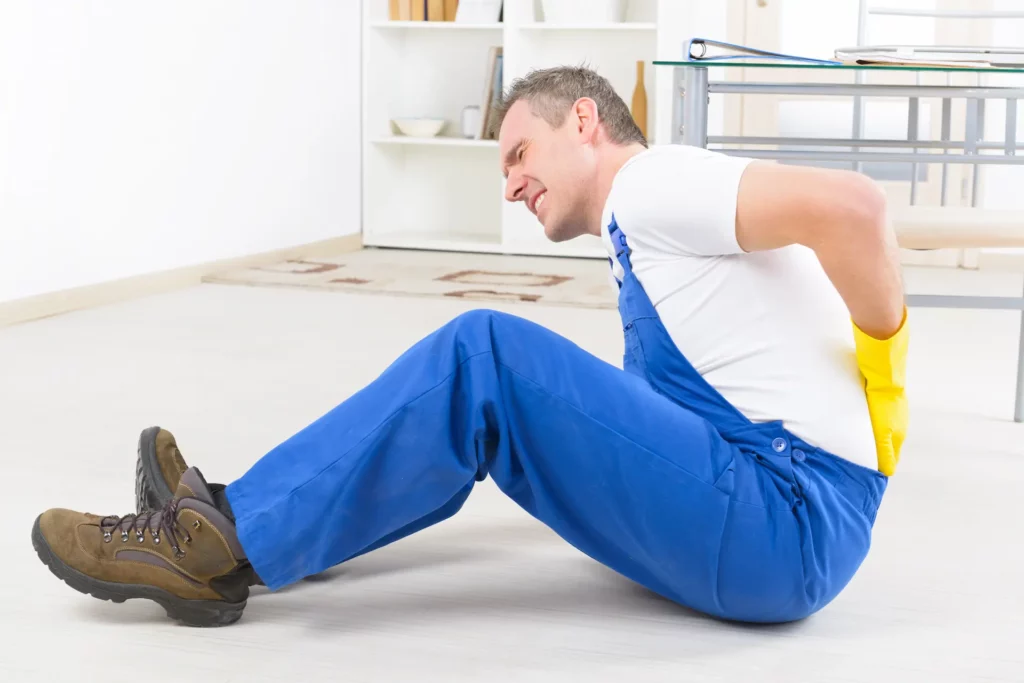
Workplace accidents can occur in various industries and significantly affect workers’ health, safety and financial well-being.
Common types of workplace accidents in Houston
As a bustling industrial hub, Houston witnesses a range of workplace accidents. Some common types include:
Machinery accidents: Injuries caused by improper use or maintenance of machinery, lack of training, or malfunctioning equipment.
Heavy equipment accidents: This could include injuries and fatalities resulting from the negligent operation of equipment such as forklifts, man-lifts, and cranes.
Transportation incidents: Accidents involving vehicles or equipment used in workplaces, such as forklifts, trucks, or company vehicles.
Falls from heights: Accidents occur when workers fall from ladders, scaffolds, or elevated platforms.
Exposure to hazardous substances: Illnesses or injuries resulting from exposure to toxic chemicals, fumes, or substances in the workplace.
Injuries and occupational diseases resulting from workplace accidents
Workplace accidents can lead to various injuries and occupational diseases, including:
Musculoskeletal injuries: Strains, sprains, fractures, and back injuries.
Traumatic injuries: Head injuries, traumatic brain injuries, spinal cord injuries, burns, or amputations due to accidents involving machinery, falls, or collisions.
Fatalities: The loss of life in a workplace accident is a preventable incident.
Occupational diseases: Illnesses arising from prolonged exposure to harmful substances, such as respiratory conditions, hearing loss, or occupational cancers.
Workers’ compensation and personal injury claims
Workers’ compensation is an insurance program that provides medical benefits and wage replacement for injured employees. In Houston, most employers are required to carry workers’ compensation insurance.
Workers’ compensation claims are generally the primary avenue for seeking initial compensation for workplace injuries, covering medical expenses and a portion of lost wages.
Pursuing Legal Action Against Third Parties for Workplace Injuries
In many cases, workplace injuries result from the negligence of third parties, not the employer or a co-worker. Examples of a third-party include the negligence of a person or company that was not the injured person’s employer, such as another contractor on a job, a delivery driver, or a product manufacturer. In such situations, injured workers may be able to pursue a personal injury claim against these third parties.
This can allow for additional compensation beyond what is available through workers’ compensation, including damages for pain and suffering, mental anguish, physical impairment, loss of future earnings, and other related losses.
Want to know more about Personal Injury Claims to get your rightful Compensation?

Understanding personal injury claims is crucial for Houston residents as it enables them to protect their rights and seek the compensation they deserve.
For anyone with a personal injury claim, seeking legal assistance from an experienced personal injury attorney is paramount. These professionals possess the knowledge, expertise, and resources to navigate the complexities of personal injury cases and ensure that those harmed by the negligence of another receive fair compensation for their injuries, medical expenses, lost wages, and other damages.
Don’t hesitate to get in touch with a personal injury lawyer today.
FAQs on Types of Personal Injury Claims
Q: How do I know if I have a valid personal injury claim?
A: Determining the validity of a personal injury claim depends on various factors. Generally, you may have a viable claim if you have suffered an injury or harm due to someone else’s negligence or because of a defective product. Consulting with a personal injury attorney is crucial for assessing the specifics of your case and determining the likelihood of success.
Q: What is the process for filing a personal injury claim?
A: The process for filing a personal injury claim involves the following steps:
- Consulting with a personal injury attorney to evaluate your case and determine legal options.
- Gather evidence, such as medical records, accident reports, and witness statements, to support your claim.
- Negotiating with insurance companies for a fair settlement or proceeding to litigation if a satisfactory agreement cannot be reached.
- Presenting your case in court, including providing evidence and testimonies to support your claim.
- Receiving a verdict or settlement and pursuing the necessary steps to collect the compensation awarded.
Q: What are some common examples of personal injury claims?
A: Some common examples of personal injury claims are:
- Car accidents
- Truck accidents
- Workplace accidents
- Construction site accidents
- Offshore and maritime accidents
- Product liability as a result of a defective product
- Premises liability such as slip and fall accidents
- Medical malpractice
Q: What factors determine the value of a personal injury claim?
A: The value of a personal injury claim depends on many factors including the liability facts of the case, the severity of the injuries, medical care expenses, lost wages, and more

Michael S Callahan is an attorney and founder of The Callahan Law Firm. He focuses his practice on representing individuals and families in personal injury cases involving motor vehicle and truck accidents, workplace accidents and defective products. With over 25 years of experience, he is dedicated to fighting on behalf of people whose lives have been forever altered by the negligence and carelessness of corporations and individuals. Originally trained as a mechanical engineer, Michael has been practicing law and fighting for justice for those who need it most since 1994. He is board-certified in Personal Injury Trial Law by the Texas Board of Legal Specialization and a member of various esteemed legal associations. Outside of work, Michael enjoys spending quality time with his family, outdoor activities, and continually striving to improve as a trial lawyer and human being.







